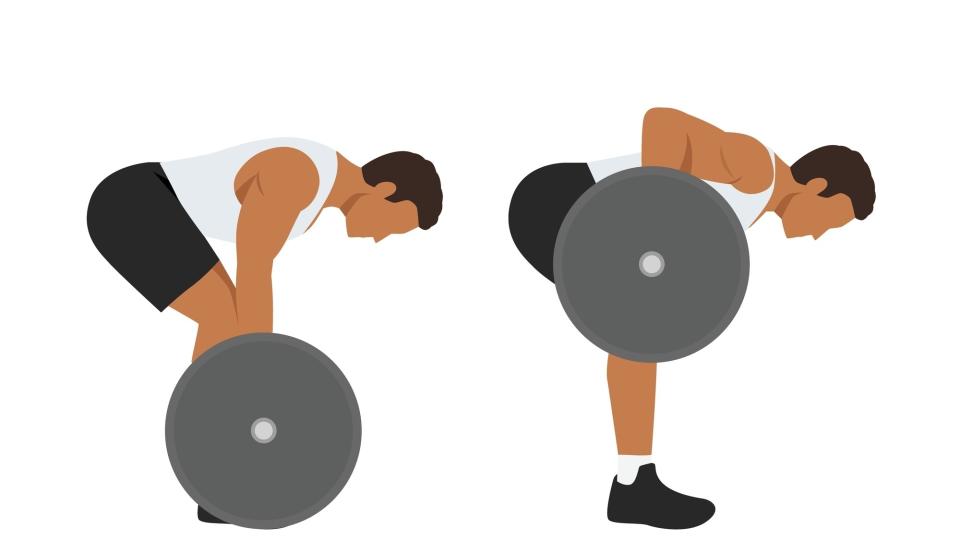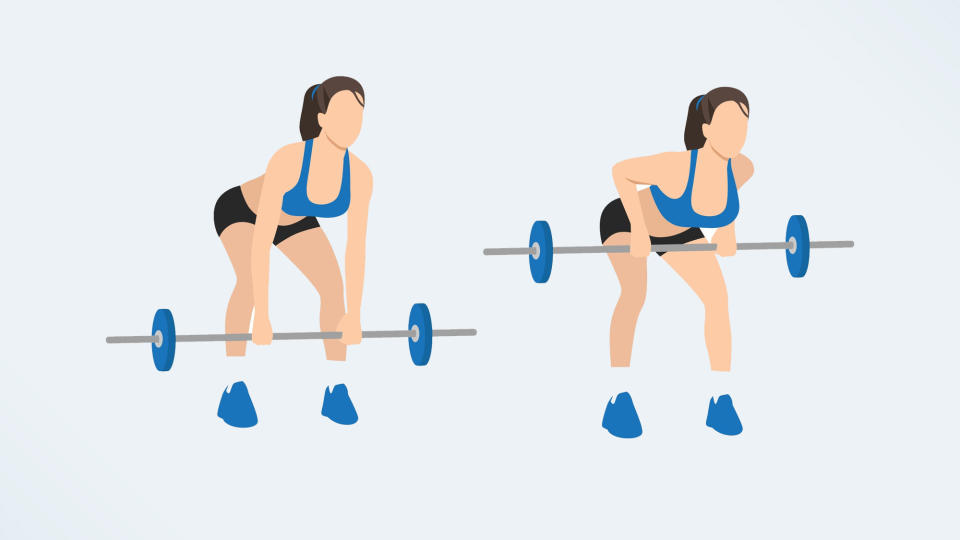Pendlay row vs barbell row: Which is better for building muscle in your back?

The Pendlay row versus barbell row: which is better for building muscle? Below, we cover the benefits of both rowing techniques, how to do them with proper form and which one comes out on top.
Preview
Whether your goals are to build muscle mass, improve strength or develop power, we can help you decide which row to add to your strength training program. Grab a set of the best adjustable dumbbells and read on.
Pendlay row vs barbell row: What’s the difference?


Pendlay rows are a barbell row variation, and the difference is pretty simple — movement pattern.
To execute a Pendlay row, start with the weight on the floor, then row explosively from a dead-stop position for each rep. That means you’re moving with more range of motion as you lift the weight off the floor every time, and you’ll need more pulling power. During barbell rows (or bentover rows), start in a bentover position by hinging forward at the hips without releasing the weight down.
The latter means your muscles are under constant load (a technique called time under tension) as you flex and extend your elbows, especially in your lower back, whereas a Pendlay row, similar to a deadlift, requires you to reset reps each time.
So, is one more effective than the other?
Pendlay row vs barbell row: Which is better for muscle building?
As we mentioned above, you’ll target similar muscle groups using both. But Pendlay rows are technically better at developing explosive power as you learn to pull from the floor, which is handy if you enjoy powerlifting.
Developing this technique could translate to other skilled weightlifting exercises like power cleans, snatches and other moves that require powerful barbell pulls from a similar position.
Arguably, working through a greater range of motion could stimulate more muscle fibers, which we cover with 5 ways to build muscle without lifting heavier weights. Check out the video below for an example of power cleans to see what we mean about pulling power.
Barbell rows are commonly used in strength or hypertrophy training (the muscle-building process) because your muscles are under tension for longer. Most people can also load more using barbell rows, as there’s nowhere to hide when driving the weight up from the floor.
If you add barbell rows to your training plan, program according to principles that align with your goals. We cover everything you need to know about hypertrophy vs strength training here.
But as a brief example, lifting heavier weights for higher sets (4-6) and fewer reps (2-6) lends itself to strength training, whereas working at a submaximal load for fewer sets (3-4) and higher reps (8-12) is geared toward hypertrophy style training. The latter is how you grow muscle.
Pendlay and barbell rows will help you build a strong back, but if one takes your fancy, here’s how to do both.
Pendlay row vs barbell row: How to do them
It’s all in the starting position. Otherwise, they’re pretty similar.
How to do the Pendlay row:
Start with a loaded barbell on the floor. Stand with the widest part of your feet directly under the bar, feet hip-width apart
Bend at your knees and hinge at your hips, sending your bum behind you
Lower your chest parallel to the floor with a flat back and neutral spine
Grip the barbell in an overhand grip just outside of your legs
Squeeze your back and pull your shoulders back and down, engaging your lats and core
Slightly lift the bar to remove any slack before you lift
As you exhale, pull the bar toward your stomach with power, driving your elbows back and behind
Pause at the top and squeeze your shoulder blades together, then lower the bar to the floor and reset for the next rep.
Avoid bouncing the bar off the ground after each rep and move with control.
How to do the bentover barbell row:
Start with a loaded barbell on the floor. Stand with feet hip-width apart and the widest part of your feet directly under the bar
Softly bend at your knees, hinge at your hips and send your bum behind you
Grip the barbell in an overhand grip just outside of your legs
Squeeze your back, pull your shoulders back and down and engage your lats and core
Perform a deadlift to stand up. Softly bend the knees, hinge forward at the hips and send your bum back as you trace the bar down your legs to a 45-degree position
Keep your back and core braced as you drive the bar toward your belly button, squeezing your shoulder blades together. Maintain a neutral spine and neck position throughout, tucking your chin slightly
Lower the bar down to fully extend your arms, then repeat.
Ensure your elbows stay close to your ribs and avoid swinging your body or lifting your chest as you row. Try to keep your shoulders relaxed without hunching toward your ears. Here’s everything you need to know about the bentover barbell row.
Pendlay row vs barbell row: Muscles worked
During both rows, you’ll target the latissimus dorsi, rhomboids, trapezius, rear deltoids, erector spinae and biceps and activate your glutes, hip flexors and hamstring muscles. Many of these muscles are responsible for good posture, back muscle definition and injury prevention.
Pendlay row vs barbell row: How to program
Adaptation occurs through consistency and challenge, whether training for muscular growth, endurance or strength. The buzzword is progressive overload, which involves increasing the intensity of a move through load, reps, sets, or tempo.
During strength programs, choose a weight close to your one rep max (1RM). Aim for around 65-85% of your maximum weight during hypertrophy training. Here’s how to calculate your one rep max and tailor it to your training program.
Pendlay rows are better suited to strength training principles (higher sets, lower reps) and as an accessory for advanced lifts like jerks, deadlifts or cleans found in Olympic lifting and CrossFit. Barbell rows sit better within hypertrophy training (higher reps, lower sets) for growing muscles.
Pendlay row vs barbell row: Verdict
To develop explosive strength and power, Pendlay rows are your top choice. Lifting from the ground will prevent your body from relying on momentum to drive the movement and improve your range of motion.
If muscle building is your goal, consider barbell rows, as you can play around with variables such as grip (an underhand grip heavily recruits your biceps), volume and positioning (like split stance), targeting muscle engagement differently. Maintaining the hinge position under load strengthens the posterior chain muscles responsible for posture and stability.
If you want to build powerhouse back muscles or improve strength, rows earn their place amongst the top compound exercises as part of any strength or hypertrophy program.
Always check with your personal trainer or qualified medical professional before trying either variation if you suffer from lower back pain. Arguably, Pendlay rows take a bit of heat off the lower back and legs and pack more load on the upper body, but your body still lifts a dead weight every rep. Barbell rows keep your lower back under constant tension, and people often compromise form under heavy loads.
So, avoid rounding your back throughout either move and focus on improving mobility in your spine, lower back and hips if you have limited flexibility. We detail some ideas at the bottom of this article.

